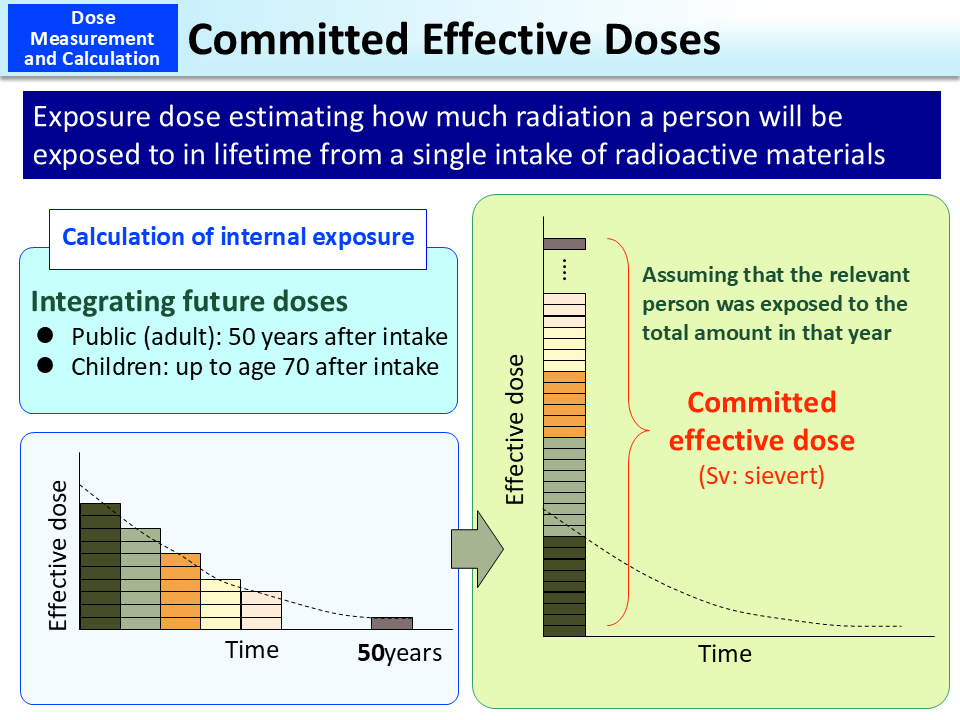Committed Effective Doses
Radioactive materials remain in the body for a certain period of time after being taken into the body. In the meantime, the body will be continuously exposed to radiation. Thus, the total amount of radiation that a person will be exposed to into the future is calculated as dose due to internal exposure based on a single intake of radioactive materials. This is called a committed dose (in sieverts).
Any radioactive materials taken into the body will decrease over time. One contributing factor is the decay of the radioactive materials. Another is excretion as urine and feces. The rate of excretion from the body varies according to the types of elements, their chemical forms, and the age of the person. With these differences taken into account, the cumulative amount of radiation that the human body will receive in a lifetime from radioactive materials is assumed as the amount received in the year of the intake, and a committed dose is calculated.
In particular, the lifetime cumulative dose based on effective dose is called “committed effective dose.” The lifetime here is 50 years for adults, and for children it is the number of years up to reaching age 70. In the case of radioactive cesium, which is discharged out of the body at a fast rate (Cesium-134 and Cesium-137 have effective half-lives of 64 days and 70 days, respectively) (p.31 of Vol. 1, “Radioactive Materials Derived from Nuclear Accidents”), most of the committed dose is considered to be received within 2 to 3 years after its intake.
- Included in this reference material on March 31, 2013
- Updated on March 31, 2015

